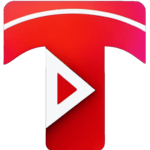- Tubelator AI
- >
- Videos
- >
- Science & Technology
- >
- Part 2- Setting up the Repository in DevOps and other CICD Environment Setup - CICD in Tamil
Part 2- Setting up the Repository in DevOps and other CICD Environment Setup - CICD in Tamil
#databricks #azuredatabricks #azuredataengineer #azureintamil #azuretutorialforbeginners #databricksintamil #cicd #azuredevops #devops
In this Part 2 video of CI/CD in Azure Databricks, I have discussed about setting up the repository in Azure DevOps followed by protecting the Main branch based on the merging techniques that have been followed in CICD with the complete DEMO.
The next parts will be uploaded soon, stay tuned!
Part #3. Creating CI Pipeline
Part #4. Creating CD Pipeline and Testing
Chapters
TimeStamp:
0:00:00 - Intro
0:02:07 - Setting up the Repository in Azure DevOps
0:5:42 - Integrating Repository with Azure Databricks workspace
0:15:14 - Branch Protection
0:21:47 - Merge changes to Main
Please like, share and subscribe if you like the content and leave your comments below.
For contact,
Email: [email protected]
Instagram: mrk_talkstech_tamil
#AzureDatabricks #ApacheSpark #Sparkcompute #clusters #notebooks #magiccommands #machinelearning #ETL #CICD
Video Summary & Chapters
No chapters for this video generated yet.
Video Transcript
Now I am in Azure portal
I have opened the Azure portal in RG Data Engineering Project Resource Group
We have done the complete end to end project using this resource group
I have opened the Databricks Workspace in this resource group
This is the Databricks Workspace
You can see that all the notebooks used in our project are here
I have created another resource group
The name of this resource group is RG Data Engineering Project Prod
You can see the resources in the dev group
I have created it here
I have opened the databricks workspace here
You can see here, DBW, Mr.K, Demo01, Prod
This is the prod databricks workspace
I have created a brand new workspace here
We have to create these three notebooks in the shared folder
we have to create these three notebooks
in this workspace, in the shared workspace, there is no notebook
so we have to use this CI-CD pipeline to deploy the notebooks in the Databricks workspace through the pipeline
so in this, our dev resource group is there, so you can consider this as the dev environment
So, you can consider it as a part of your production resource group.
So, we saw in the last video that we are going to integrate with the dev database workspace with the help of the git repository.
So, we are not going to integrate with any resource in the production environment with the help of the git repository.
So, what I am going to do now is, we can close the prod tabs.
We can close the resource group.
We don't need it now.
I just opened it to show you.
We can close this.
We can close the resource group.
We can close the resource group.
We can close the resource group.
Now, the first step is
to integrate the Git repository
with the Databricks workspace.
to integrate the Databricks workspace.
For that,
I have opened another tab.
This is the
So, you can see the URL here.
dev.ashu.com
slash mrktalkstech
So, this is the name of the organization of Devops.
So, when we
first signed in to
Ashu Devops,
we created an organization
with the name mrktalkstech.
Before that, we
created a project
called Ashu Tutorials.
So, now, instead of


 Install Tubelator On Chrome
Install Tubelator On Chrome










